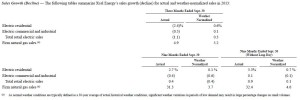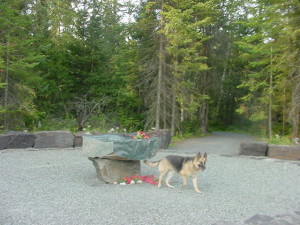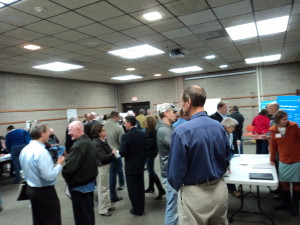PUC Rulemaking tomorrow!
October 28th, 2013
;kadf
These are the docs from the PUC, meeting notes and drafts of Minn. R. Ch. 7849 and 7850:
And today, from the Wind Coalition (wind developer lobby), somebody must have lots of time on her hands, or be getting paid big bucks — there’s a lot here:
Change-Pro Redline – 7482864-v3-
MN Wind Coalition Revisions to 7894.0400…-c
Change-Pro Redline – 7542116-v3-Minnesota Wind Coalition IPP
Electric demand is down… down… DOWN!
October 28th, 2013
What’s new? Well, Xcel Energy has announced its 3Q results and the 2013 demand just keeps going down!
From Seeking Alpha, the 3Q call transcript (emphasis added):
Kit Konolige – BGC Partners, Inc., Research Division
On the — your sales growth outlook, I believe you said that you are expecting 0% to 0.5% in 2013. Can you discuss the breakdown by states on that and maybe any color about commercial versus industrial versus residential? And also give us a view of the longer term sales outlook that you’re seeing at this point?
Teresa S. Madden – Chief Financial Officer and Senior Vice President
Well, sure, Kit. Let’s start with the 2013 by the states. Minnesota, we’re still projecting a decline of about 1.2%. In NSP-Wisconsin, just a slight decline. And then the other 2 jurisdiction, PSCo slightly up and SPS at about 1.2% range. But all of it netting to within the — up to 0.5%. When we look to the future, we’re looking at about, as we indicated in our guidance up to 0.5%, those are narrowing, not such a great degree in terms of the decline in NSP-Minnesota. In terms of the various classes of customers, it does vary by jurisdiction. I will say that C&I, we see the most growth in Texas with the oil and gas industry boom.
CLICK HERE FOR FULL TRANSCRIPT.
Let me repeat that tidbit:
Minnesota, we’re still projecting a decline of about 1.2%. In NSP-Wisconsin, just a slight decline.
And as we know too well, the CapX 2020 transmission project taking over Minnesota is based on their wishful-thinking projections of a 2.49% annual increase.
From Xcel Energy’s own investor page (click to enlarge):
Here’s the full 10-Q (above from p. 50):
Someone remind me — why are we paying to build this CapX 2020 transmission project?
Humane Society of Goodhue Co. in the news!
October 26th, 2013
Thinking of October 25, 2002
October 25th, 2013
EQB Standards & Criteria in Mankato
October 25th, 2013
“Minnesota’s Finest Sands.” So says Jordan Sands, the big silica sand mining operation in the Mankato area. And in Mankato we were today, for the EQB meeting about Standards and Criteria:
And Jordan Sands, Unimin, etc., were putting out a lot of dough and a lot of time in their multiple representatives at the EQB meeting in Mankato at the Blue Earth County Library. Coming it, it looked well attended. But after a look around, it was apparent that at least half were industry toadies, like my buddy Dennis Egan:
 On the other hand, several direct neighbors of the recently permitted Jordan Sands project, and a township official were there and spoke eloquently of their concerns. Scott County’s environmental crew (3) was there and told of their silica sand mine permitting experience.
On the other hand, several direct neighbors of the recently permitted Jordan Sands project, and a township official were there and spoke eloquently of their concerns. Scott County’s environmental crew (3) was there and told of their silica sand mine permitting experience.
I was handing out flyers to help people put in Comments on point about the statutory Standards and Criteria, specific ones that might be meaningful and might be taken into account — it’s hard to get people focused. But my ink jet ran out so I only had a handful. Here it is:
Ag Commissioner Fredrickson and MPCA Commissioner Stine were on hand, as well as DNR Commissioner Landwehr, and others too:
It was a public meeting, in an open house and also presentation/Q&A format where the EQB was soliciting input for the silica sands Standards and Criteria, as directed by last session’s 116C.99:
The standards and criteria must include:
(1) recommendations for setbacks or buffers for mining operation and processing, including:
(i) any residence or residential zoning district boundary;
(ii) any property line or right-of-way line of any existing or proposed street or highway;
(iii) ordinary high water levels of public waters;
(iv) bluffs;
(v) designated trout streams, Class 2A water as designated in the rules of the Pollution Control Agency, or any perennially flowing tributary of a designated trout stream or Class 2A water;
(vi) calcareous fens;
(vii) wellhead protection areas as defined in section 103I.005;
(viii) critical natural habitat acquired by the commissioner of natural resources under section 84.944; and
(ix) a natural resource easement paid wholly or in part by public funds;(2) standards for hours of operation;
(3) groundwater and surface water quality and quantity monitoring and mitigation plan requirements, including:
(i) applicable groundwater and surface water appropriation permit requirements;
(ii) well sealing requirements;
(iii) annual submission of monitoring well data; and
(iv) storm water runoff rate limits not to exceed two-, ten-, and 100-year storm events;(4) air monitoring and data submission requirements;
(5) dust control requirements;
(6) noise testing and mitigation plan requirements;
(7) blast monitoring plan requirements;
(8) lighting requirements;
(9) inspection requirements;
(10) containment requirements for silica sand in temporary storage to protect air and water quality;
(11) containment requirements for chemicals used in processing;
(12) financial assurance requirements;
(13) road and bridge impacts and requirements; and
(14) reclamation plan requirements as required under the rules adopted by the commissioner of natural resources.
Here’s a chart to give people a format and idea how to submit comments — for this exercise, we need to file specific ideas for particular standard/criteria (in the middle column), and it’s very helpful to list whatever supporting documentation or authority you have for this criteria (right hand column), such as a local ordinance, or health studies:
Below is a prior comment I’d sent in for Winona County CASM with some thoughts tossed together — well, at least the EQB used the format I proposed!
Now, back to process — here’s the schedule established at the most recent EQB meeting (last week), Will Seuffert said he was working on that earlier this month…
(ja, the light in there was awful) …and voila, the schedule, here it is:
EQB’s sand site: http://silicasand.mn.gov/
I’m concerned about the focus on SE Minnesota, evidenced by the statutory language, and listening to the words used by the toady from Unimin, that “SE IS UNIQUE” and so it is special, and implying that an open door along the Minnesota River is just fine… NOT! Earth to Mars, frac sand mining is NOT unique to SE Minnesota. Here’s the map:
and from the DNR:
Think about where the major spill has been — INTO THE FEDERALLY PROTECTED WILD & SCENIC ST. CROIX RIVER!! Not even close to SE Minnesota. Where did they start up a processing/transport facility with no permits? Harris, MN (is Loren Jennings involved in this???).
And that much is clear from the many who did show up on a Friday afternoon in Mankato, by the permits issued already, Jordan Sands in Mankato, and as addressed by the Scott County environmental guy and other staff people who had just completed an intense permitting process there. Scott (Frenchette?), Scott County, raised a few state statutes, such as Minn. Stat. 103H.01 focused on ground water degradation, 116D.04, Subd. 6 (you all recognize MEPA by now, EH?), 103I and Minn. R. 7060 regarding protection of ground water. He asked about these statutes, all related to state permits, and rhetorically wondered what a local government is to do, is there protection offered in these statutes?
Time to get to work!
Send comments on Standards and Criteria to:
silicasand.eqb@state.mn.us, and copy:
Will.Seuffert@state.mn.us
jeff.smyser@state.mn.us
bob.patton@state.mn.us
kate.frantz@state.mn.us
Deadline is November 12, but the sooner the better, give them some time to incorporate in your thoughts!












